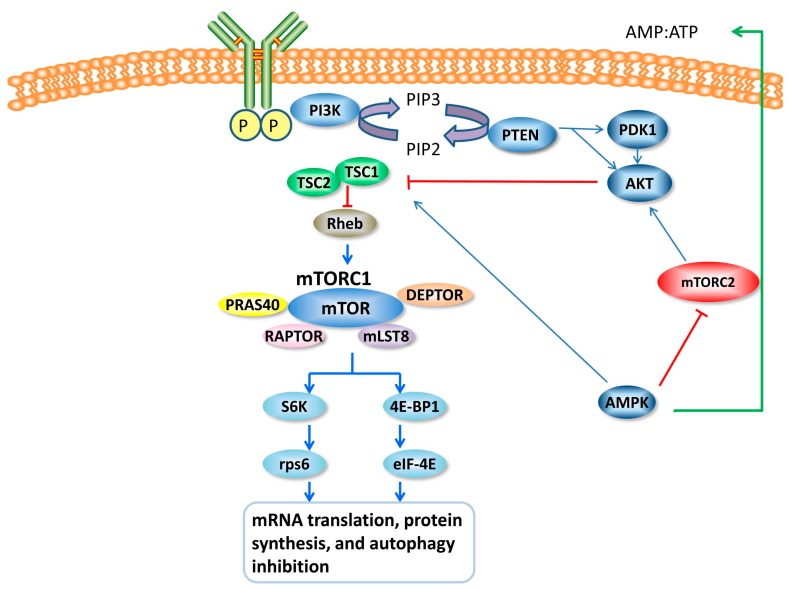Figure 2.
Schematic representation of the mTOR signaling pathway. mTORC1 is activated by Rheb (Ras homolog enriched in brain); the two most well-known downstream targets of mTORC1 are S6K1 (S6 kinase 1) and 4EBP1 (eukaryotic translation initiation factor 4E-binding protein 1). As an upstream signal, TSC (tuberous sclerosis complex) can suppress Rheb to negatively regulate mTORC1. Furthermore, PTEN (phosphatase and tensin homolog deleted on chromosome 10) can be suppressed by PI3K (phosphoinositide 3-kinase), thus inactivating the mTOR pathway. In addition, AMPK (AMP-dependent kinase) is activated by a high AMP/ATP ratio and suppresses mTOR. The main function of mTORC1 activity is the stimulation of mRNA translation, protein synthesis, and autophagy inhibition. PIP2/PIP3, Phosphatidylinositol 4,5-bisphosphate/Phosphatidylinositol 3,4,5-triphosphate; PDK1, 3-Phosphoinositide-dependent protein kinase 1; AKT1, AKT serine/threonine kinase 1; PRAS40, 40 kDa pro-rich AKT1 substrate 1; RAPTOR, regulatory associated protein of mTOR; mLST8, mammalian lethal with SEC13 protein 8; DEPTOR, DEP domain-containing mTOR-interacting protein.

